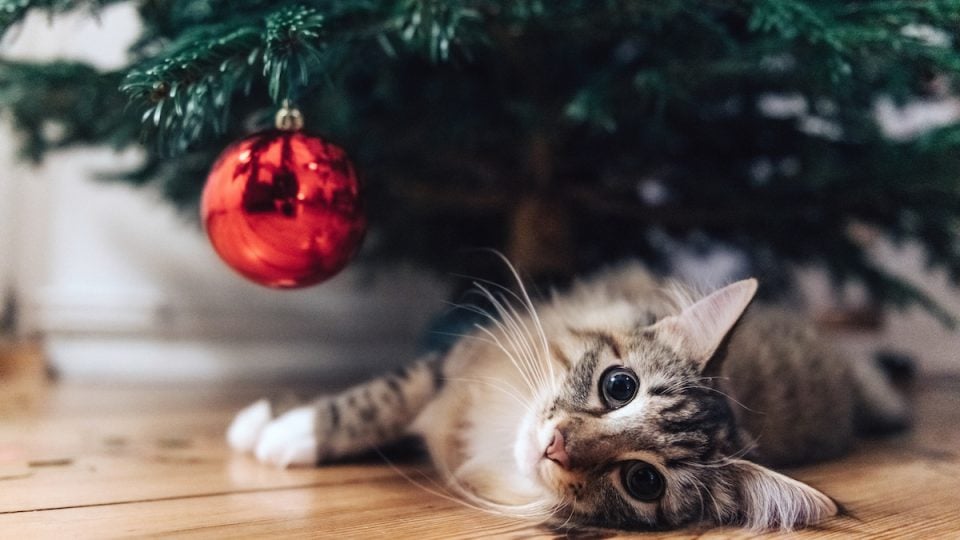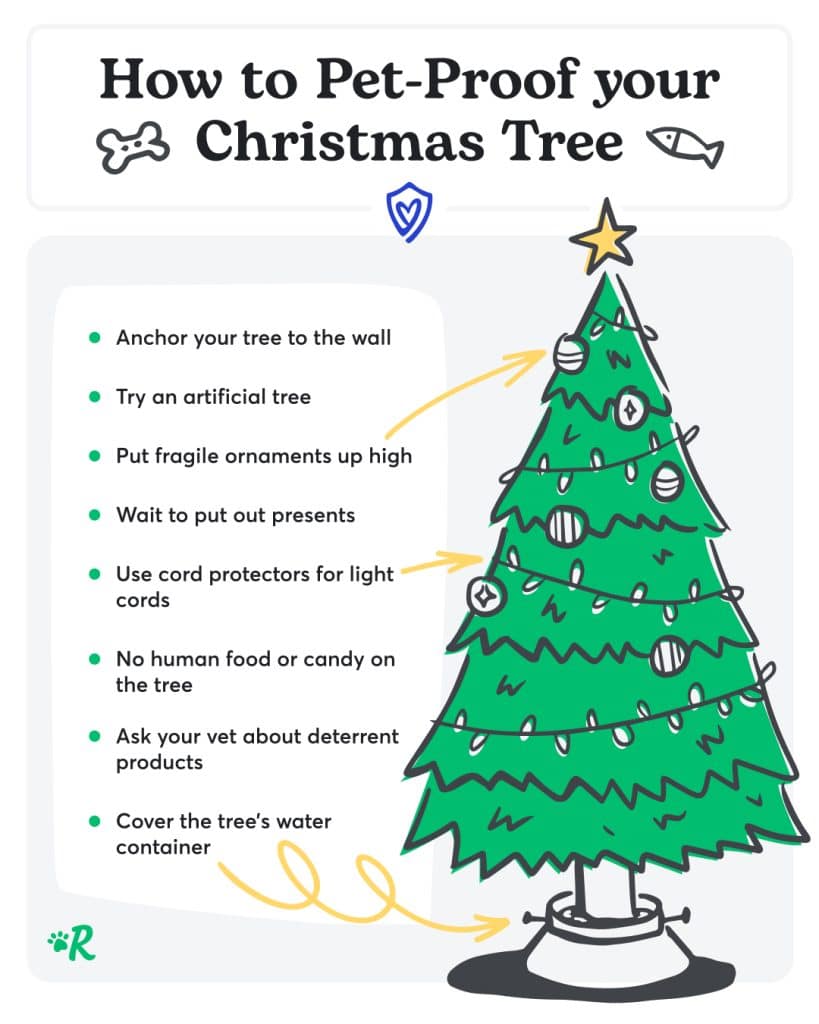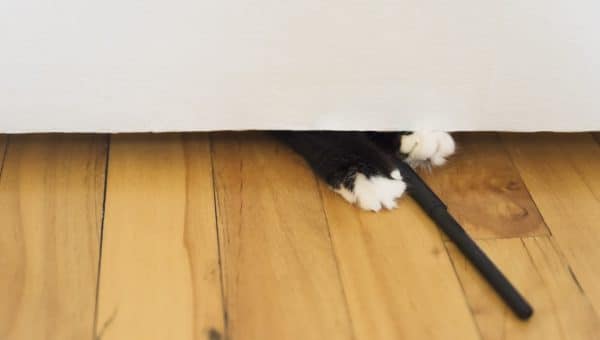- Not a substitute for professional veterinary help.
It’s a classic Christmas cliché—owner brings home tree, owner decorates tree, owner steps back to admire said tree only to see the family cat knock it over, swiftly displace the shiny ball ornaments, and/or get helplessly stuck in string lights. This year, don’t set yourself (or kitty) up for disaster—learn the following 11 hacks and tricks to cat-proof a Christmas tree.
Potential Christmas Tree Hazards for Cats
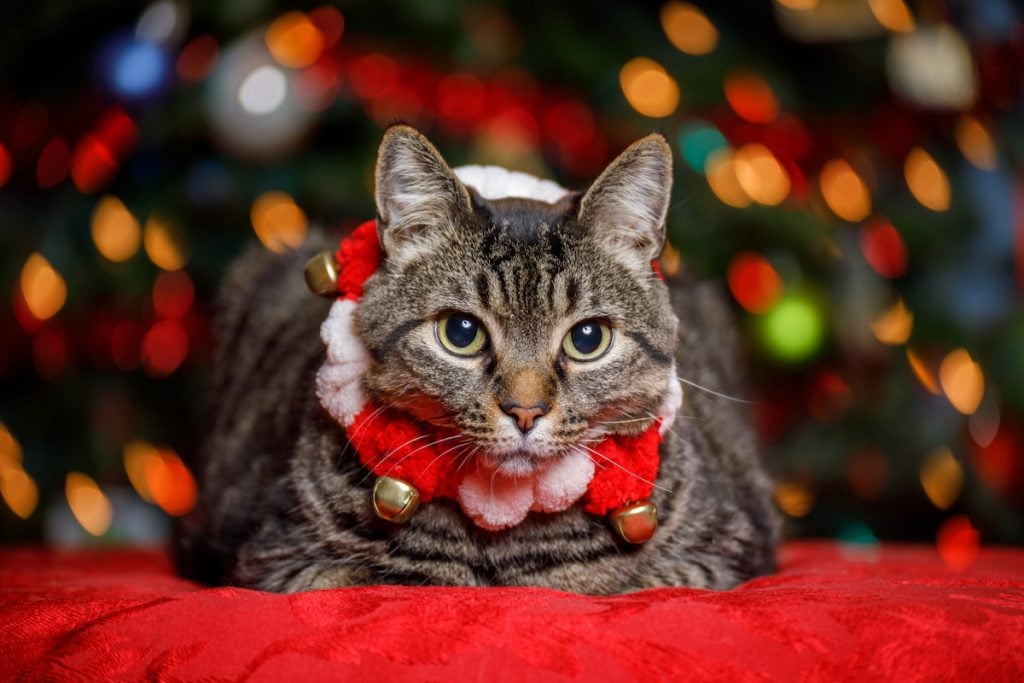
eurobanks/iStock
While you needn’t drive yourself crazy with worrying about the dangers posed by Christmas trees, there are a few holiday hazards that have the potential to harm your favorite feline. Be mindful of the following dangers:
- Tinsel and ornaments: This seasonal decor introduces a choking risk and ingestion hazard to habitual chewers.
- Electric lights pose chewing hazards, as well as a risk of electrocution and burns.
- Broken ornaments, glass, and sharp metal hangers that can injure your cat.
- Energetic climbers can knock a tree over, hurting themselves (and your tree!) in the process.
- Some cats may mistake a tree base for a litter box.
How can you protect your cat and your tree from a holiday “cat-astrophe?” Read on to discover clever tips that will help cat-proof a Christmas tree this year.
1. Proceed Slowly
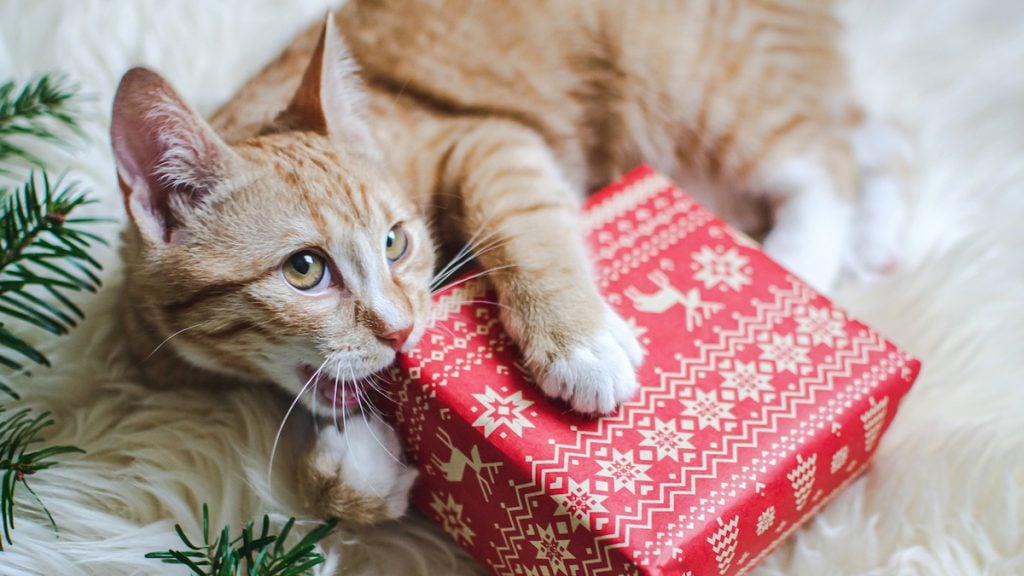
Jelena Irikova/iStock
Most cats are reluctant to embrace changes made to their routine or environment. And when a towering pine tree strewn with shiny baubles shows up unexpectedly in your home, well—that’s a BIG change for your cat to adjust to.
Before slapping that tote full of ornaments onto your tree, PETA suggests leaving it bare for the first few days. Let your cat become familiar with this new object at her own pace. Hopefully, she’ll get used to the tree and will just ignore it entirely.
2. Make Sure Things Are Secure
Skip the sharp metal hangers traditionally used to hang ornaments—they can injure curious kitties! Instead, fasten ornaments to branches as tightly as you can with wire or twine to keep your cat from swatting them off.
Make sure your tree base is sturdy enough to hold your tree in place. You may even want to consider tethering your tree to the wall, as the ASPCA recommends, to minimize its risk of falling.
3. Hang Decorations Up High
Protect heirloom ornaments by placing them out of your cat’s reach. Forgo low-hanging ornaments that might prove too tempting for your inquisitive feline. Instead, try hanging some bells around the lower branches to serve as a warning system. If you hear the bells jingling, you may need to intervene.
And while we’re on the subject of tree decor, a word of advice: skip the tinsel. If swallowed, it can cause tragic intestinal damage. Not worth it!
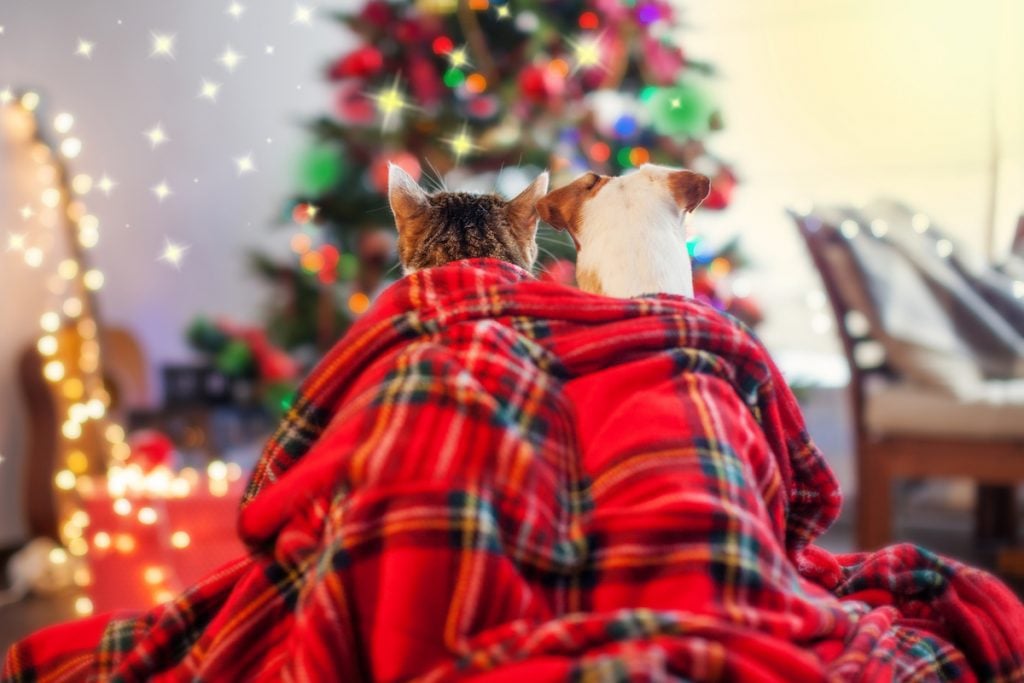
TatyanaGl/iStock
4. Be Cautious With Lights
Discourage your feline from chewing on wires by winding strings of light close to the center of your tree. You can also use a cord protector to keep your cat from gnawing on a wire.
Always unplug the lights when you’re not around.
5. Harness the Power of Distraction
Keep your cat occupied with playful (and less destructive) alternatives. Set up an area in the house with some new interactive cat toys, puzzle feeders, and scratchers to keep your cat interested in something other than the shiny ornaments on your tree.
6. Restrict Access
If you can, keep your cat out of the room with the tree anytime you’re out of the house. (Also: check out some of these ingenious Christmas tree pet-proofing hacks.)
7. Catnip-Free Zone
It’s great that you wrapped some cute catnip toys for Christmas morning. But leaving them under the tree for several days? Not so great. Remove tempting packages and save them until you’re ready to open them (with your cat, of course!)
8. Go Artificial
Sure, real trees have their charm. They’re also incredibly messy. Fallen pine needles can puncture paws and pose a serious risk to curious chewers. An artificial tree will override this hazard.
A second consideration: Get a small tree. If—despite all your efforts—an unfortunate crash does occur, a smaller tree will inflict less damage than a large one.
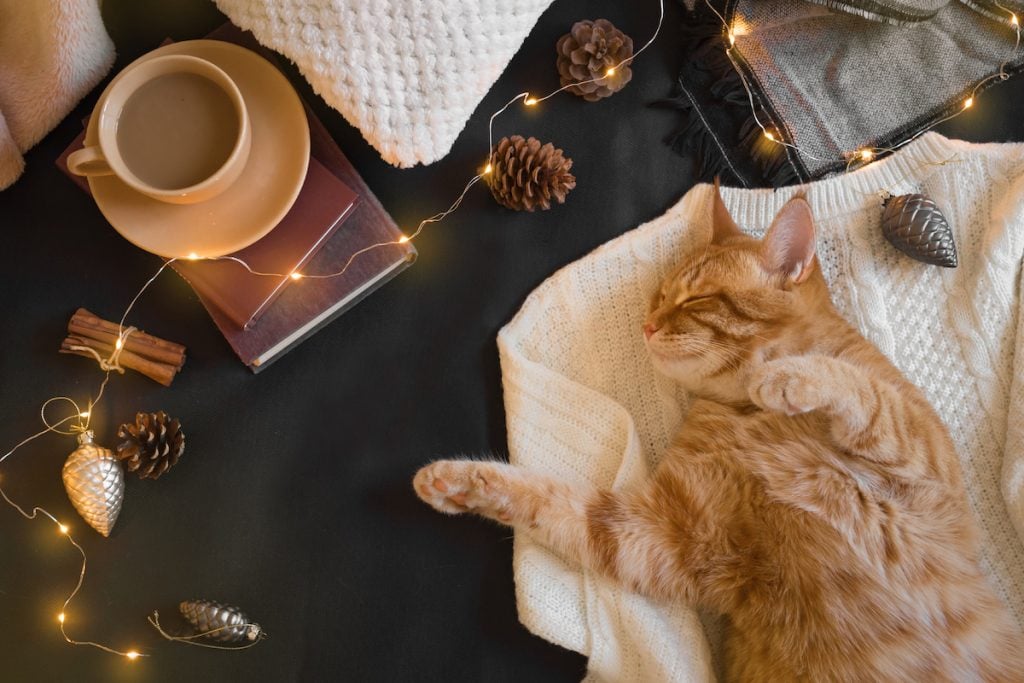
Mizina/iStock
9. Cover the Base
If you do use a real tree, cover the water-filled base with a tree skirt or blanket so your cat doesn’t drink it. This water can harbor harmful bacteria or fertilizers, which can make your cat sick.
10. Place Your Tree in a Corner
Keep your tree away from any furniture your cat could use to leap into the branches. Instead, choose a corner to make climbing more difficult.
11. Use Deterrents
Did you know that cats hate the smell of citrus? Use this aversion to your advantage and place a few orange peels around the base of the tree. You can also spray several pine cones with apple cider vinegar to repel a mischievous cat, or use an anti-scratch/cat-deterrent spray.
Wrapping your tree’s trunk in tin foil can serve the same purpose: Cats hate the feel of foil, so they’re likely to leave a foil-covered tree alone.
The Takeaway
There’s no reason for cat lovers to miss out on the excitement of decorating a Christmas tree. Some minor tweaks made to your decorating routine can mean the difference between a disastrous holiday and an unforgettable one. Once you learn how to cat-proof a Christmas tree, it’s easy to get into the holiday spirit.
